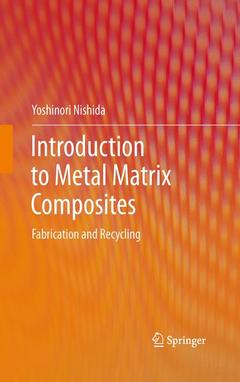Description
Introduction to Metal Matrix Composites, 2013
Fabrication and Recycling
Author: Nishida Yoshinori
Language: English
Subjects for Introduction to Metal Matrix Composites:
Approximative price 105.49 €
In Print (Delivery period: 15 days).
Add to cartPublication date: 06-2015
Support: Print on demand
Approximative price 105.49 €
In Print (Delivery period: 15 days).
Add to cartPublication date: 01-2013
203 p. · 15.5x23.5 cm · Hardback
Description
/li>Contents
/li>Biography
/li>Comment
/li>
From the Contents: Fabrication processes for composites.- Fabrication by squeeze casting.- Theory of pressure infiltration.- Centrifugal casting of metal matrix composites.- Properties of composites.- Superplasticity of composites.- Materials for the fabrication of composites.- Recycling of composites.
Yoshinori Nishida
National Institute of Advanced Industrial Science and Technology (AIST), Nagoya, Japan (retired in 2002)
The first book that presents the fabrication processes of metal matrix composites (MMCs) theoretically, experimentally, and instructively
The first book that deals with the recycling processes of MMCs theoretically and experimentally
Provides a new point of view on fabrication processing of MMCs
These books may interest you

Machining of Metal Matrix Composites 105.49 €



